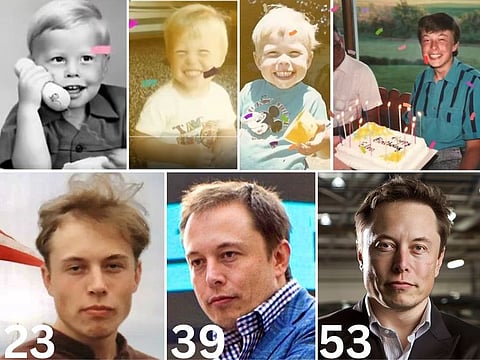Elon Musk turns 53: His insane projects in the next 5 years
Innovator pushes humanity to see a kind of future unbound by popular thinking

Manila: Elon Reeve Musk, who turns 53 today, needs no introduction. Born in Pretoria, South Africa on June 28, 1971, Musk is considered one of the greatest "disruptors" of our time.
A self-taught coder, he created his first computer game (Blastar) at age 12. When Musk’s biggest rocket (Starship) ascends, it’s a sort of phoenix in flame, out to conquer the void. One of his ultimate targets: occupy Mars.
How does he fund his out-of-this world dreams?
Musk currently makes his money from his roles in Space X (recently valued at $210 billion) and electric vehicle maker Tesla (market cap: $618 billion as of June 27, 2024).
Musk (net worth, $215.5 billion as per Forbes) is also at the helm of X (formerly Twitter), The Boring Company, xAI, Neuralink and OpenAI. Articles like this are often put together, thanks to Starlink (valued at $81 billion, as per Morgan Stanley), the world's biggest internet constellation.
Critics scoff Musk for his maverick spirit and bold ventures. Here are 5 things we think Elon Musk might be into in the next 5 years (2024-2029):
#1. Starship dominates space travel:
This super heavy-lift launch vehicle, already the biggest orbital, (theoretically) reusable rocket in the world, is a key part of Musk’s vision for colonising Mars. Starship continues to undergo development and testing, with potential for:
#3. Tesla 'Bot' becomes reality:
The Tesla Bot, a humanoid robot designed for manual labour, is currently still under development. It embodies Musk's machine-that-makes-the-machine kind of endeavour. In the next 5 years, we might see:
#2. Neuralink makes breakthroughs:
This Neuralink brain-computer interface aims to connect the human brain to computers. The next 5 years could bring:
#4. xAI shapes the future of AI:
The US startup working on artificial intelligence (AI) for scientific discovery, founded in 2023, has released its first conversational AI named Grok.
Musk was previously involved in AI research, being the co-founder of OpenAI in 2015, a non-profit (behind ChatGPT) focused on safe and beneficial artificial intelligence.
Due to disagreements about the direction of OpenAI, Musk stepped down from the board in 2018. With Grok, we might see:
#5. Hyperloop takes its first steps:
The Hyperloop transportation system aims to transport people and cargo at ultra-fast speeds. In the next 5 years, we could see:
This is to say nothing about Tesla, which has sold more than 1.2 million units in America alone (including 10,000 to the US government). Tesla claims its full self-driving software (FSD, still on "beta" test) is already safer than human drivers. Experts admit that self-driving cars have the potential to significantly reduce traffic accidents, which are often caused by human error.
Moreover, autonomous vehicles ("robotaxis) could provide transportation options for people who cannot drive themselves, such as the elderly or those with disabilities, while optimised traffic flow, potentially reducing congestion and travel times.
Musk is known for his ambitious goals and timelines that can sometimes shift. However, these 5 areas represent some of the key areas where his companies are likely to be making significant progress in the next few years.
Important note: These are just our forward-looking statemens and are neither endorsements for his companies nor offering investment advice.
Sign up for the Daily Briefing
Get the latest news and updates straight to your inbox



